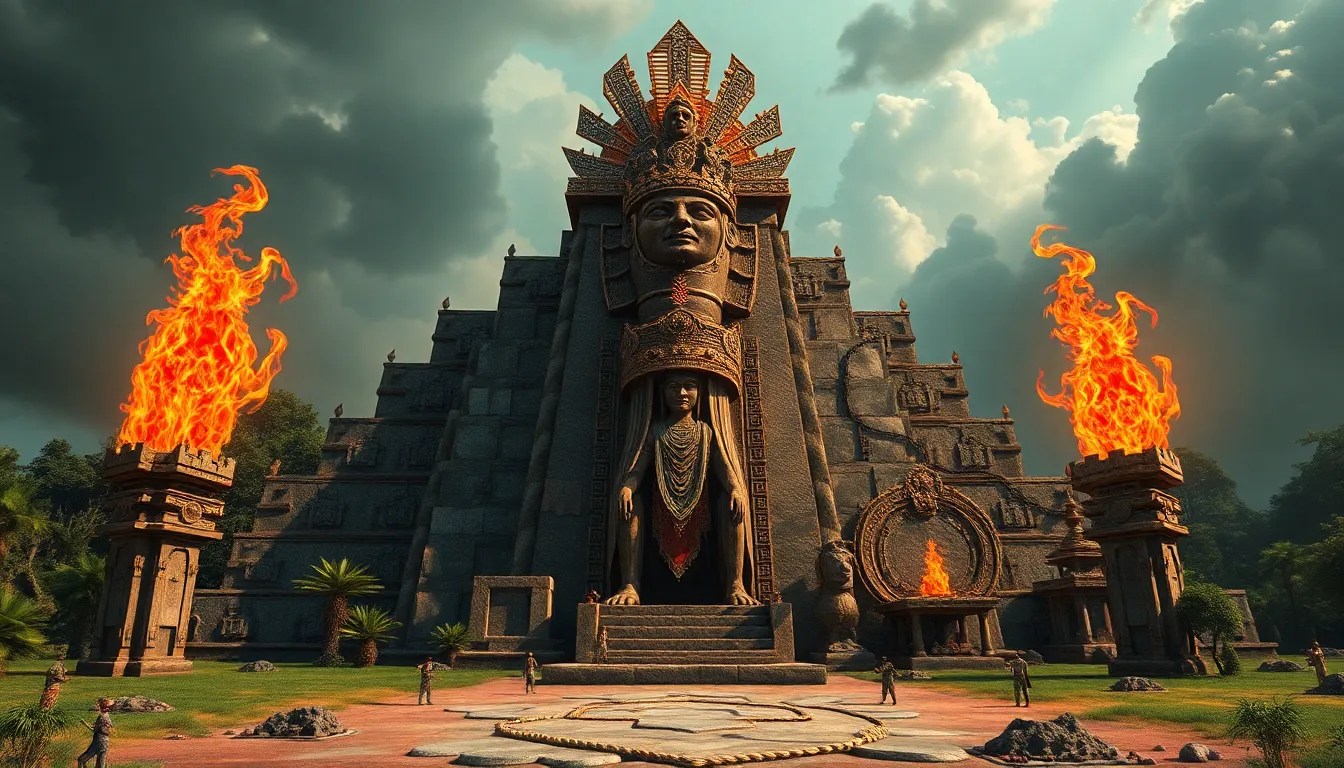Mayan Animism: The Spiritual Significance of the Elements
I. Introduction to Mayan Animism
Animism, in the context of Mayan beliefs, refers to the understanding that all elements of the natural world possess a spirit or consciousness. This ancient belief system imbues the environment with meaning and significance, asserting that humans are intricately connected to the natural world. In Mayan spirituality, elements such as earth, water, fire, and air are not merely physical substances; they are living entities that influence life, health, and the cosmos.
The purpose of this article is to explore the profound connection between these elements and the Mayan worldview. By examining the spiritual significance of each element, we can gain insight into how the ancient Maya perceived their environment and the intricate relationships that define existence.
II. The Four Elements in Mayan Cosmology
A. Earth: Symbolism and Spiritual Significance
In Mayan cosmology, the earth is a powerful symbol of fertility and sustenance. It represents the foundation of life, agriculture, and the underworld, known as Xibalba. The Maya believed that the earth is a nurturing mother, providing the necessary resources for crops and sustenance.
- Connection to fertility: The earth is revered as a life-giving force, essential for agricultural practices.
- Underworld significance: The Maya viewed the earth as a gateway to Xibalba, where souls journey after death.
Notable earth deities, such as Chac, the rain god, play vital roles in Mayan myths, embodying the earth’s power and its ability to nurture or withhold sustenance.
B. Water: Purity, Life, and Sustenance
Water is revered in Mayan spirituality for its purity and its role as a source of life. Rivers, lakes, and cenotes (natural sinkholes) are sacred, often serving as sites for rituals and offerings.
- Importance in rituals: Water is integral to many ceremonies, symbolizing purification and renewal.
- Water gods: Deities like Itzamná, the creator god associated with water, illustrate the element’s significance in culture.
C. Fire: Transformation and Renewal
Fire holds a dual role in Mayan cosmology. It is both a symbol of transformation and a vital element in rituals and creation myths. The Maya viewed fire as a force of renewal, representing both destruction and regeneration.
- Role in rituals: Fire is used in ceremonies to invoke the gods and facilitate communication with the divine.
- Creation myths: Fire is often depicted as a catalyst for change, illustrating the cyclical nature of life.
D. Air: Breath of Life and Communication with the Divine
Air is considered the breath of life, essential for existence and spiritual communication. The wind is seen as a messenger, carrying prayers and intentions to the gods.
- Wind deities: Gods like Ek Chuah, associated with trade and communication, demonstrate the importance of air in daily life.
- Significance in rituals: Air is often incorporated into rituals, emphasizing the connection between the material and spiritual worlds.
III. The Interconnectedness of Elements
The elements in Mayan belief are not seen as isolated; rather, they are interconnected, each influencing the others within a holistic system. This interconnectedness reflects the Maya’s understanding of balance and harmony in nature.
- Interactions: For instance, rain (water) nurtures the earth, while fire can clear land for new growth.
- Balance: The concept of balance is crucial, as the Maya sought to maintain harmony between the elements for sustainable living.
- Cyclical nature: Life, death, and rebirth are cyclical processes, mirroring the relationships among the elements.
IV. Rituals and Practices Reflecting Elemental Significance
Traditional Mayan rituals often involve the elements, showcasing their significance in spiritual practices. These ceremonies are designed to honor the elemental spirits that influence the community and the environment.
- Overview of rituals: Many rituals include offerings to the gods, invoking their blessings for fertility, health, and prosperity.
- Specific ceremonies: Each element has dedicated ceremonies, such as water rituals at cenotes, fire ceremonies for purification, and earth rituals during agricultural cycles.
- Offerings and sacrifices: The Maya would offer food, flowers, and even blood to honor elemental spirits, acknowledging their vital role in sustaining life.
V. Elemental Spirits and Deities in Mayan Mythology
The pantheon of elemental deities in Mayan mythology is rich and varied. Each god embodies different aspects of the elements, influencing various facets of life and agriculture.
- Introduction to deities: Key figures include Chac (earth and rain), Itzamná (creation and water), and Ek Chuah (trade and air).
- Stories and myths: Many myths recount the adventures and interactions of these gods, illustrating their significance in the Mayan worldview.
- Impact on daily life: These deities were central to agricultural practices, affecting planting and harvesting cycles.
VI. Modern Interpretations and Practices
Today, many contemporary Mayan communities continue to uphold animistic beliefs, demonstrating the resilience of their cultural heritage. However, modern challenges bring new dimensions to these practices.
- Continuation of beliefs: Rituals honoring the elements remain integral to community life, reinforcing cultural identity.
- Influence of climate change: Environmental concerns have led to a renewed emphasis on sustainable practices and respect for nature.
- Tourism and cultural preservation: The growing interest in Mayan spirituality has sparked efforts to preserve and share these traditions with wider audiences.
VII. Comparative Analysis with Other Indigenous Beliefs
Understanding Mayan animism also involves comparing it with other indigenous belief systems, revealing both similarities and unique aspects.
- Similarities: Like many indigenous cultures, Mayan animism emphasizes the interconnectedness of nature and spirit.
- Unique aspects: The specific focus on elemental deities and their roles in agriculture sets Mayan beliefs apart.
- Global significance: Recognizing the depth of Mayan spirituality contributes to a broader understanding of indigenous worldviews.
In conclusion, Mayan animism offers a profound insight into the spiritual significance of the elements. By exploring the intricate relationships between earth, water, fire, and air, we gain a deeper appreciation for the Mayan worldview and its enduring legacy in contemporary society.



